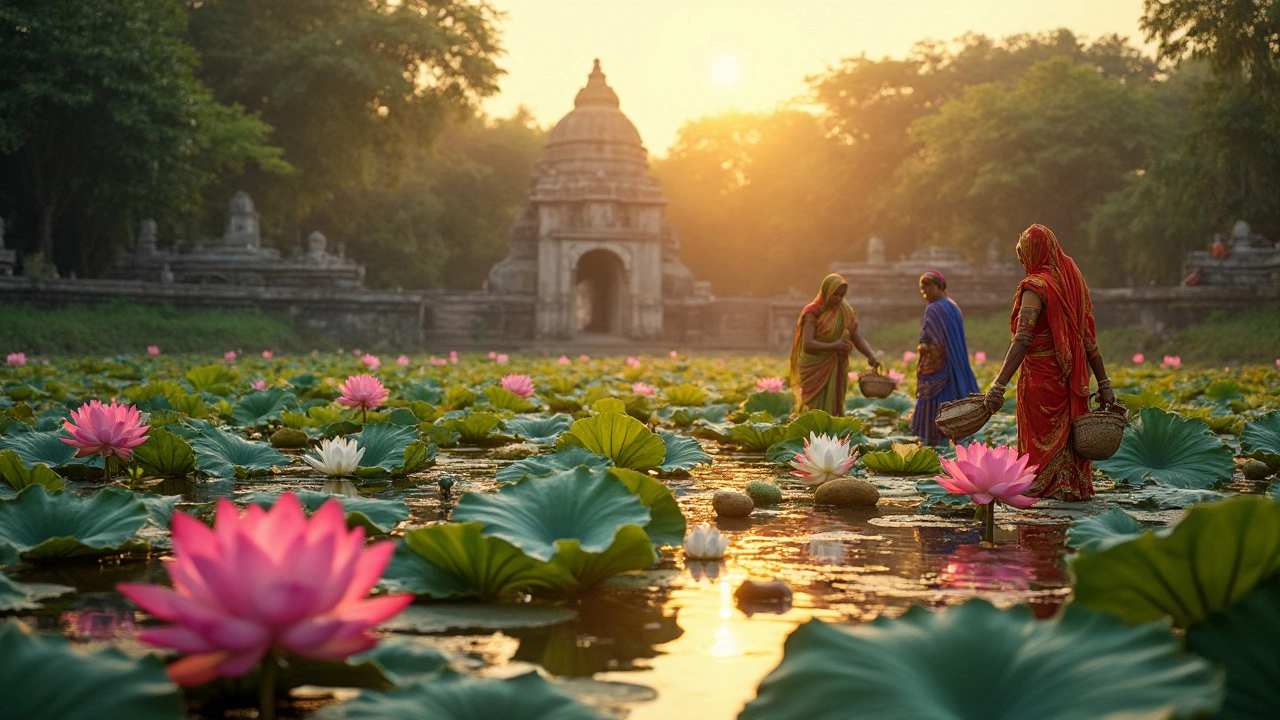Curious about India’s national flower? This article dives into the story behind the lotus and why it holds such a special place. Learn surprising facts, see what makes it thrive, and get practical tips if you want to grow your own. We’ll unpack the cultural side too—because in India, the lotus is so much more than just a pretty plant. Perfect if you want to know how this flower fits into daily life and different seasons.
Lotus Facts: Why This Sacred Flower Dominates Indian Gardens and Culture
When you think of India’s most powerful plant, the lotus, a water-lily species native to Asia and deeply tied to spiritual traditions in India. Also known as Nelumbo nucifera, it doesn’t just float on ponds—it holds a place in temples, art, coins, and even the national emblem. This isn’t just another flower. It’s a living symbol of purity, resilience, and renewal. Unlike most plants that wilt in mud, the lotus rises clean and bright from muddy waters, which is why it’s been worshipped for thousands of years in Hinduism and Buddhism. You’ll find it carved into temple pillars, painted on sarees, and even printed on Indian currency. And if you’ve ever seen a lotus blooming in a village pond or a city garden, you know why it’s the most admired plant in the country.
What makes the lotus so special isn’t just its look—it’s how it survives. It grows in shallow, still water, often in places where other plants choke on poor soil or rot from too much moisture. Its leaves are coated with a natural wax that repels water and dirt, keeping the plant clean without human help. This self-cleaning trait, called the lotus effect, a natural phenomenon where water beads up and rolls off surfaces, carrying away dust and microbes, has even inspired scientists designing water-repellent paints and fabrics. In India, farmers and gardeners plant lotus not just for beauty, but because it helps clean pond water, supports fish and frogs, and even provides edible seeds and roots. The seeds, called makhana, are roasted and eaten as snacks across Bihar and Uttar Pradesh. The roots, or nadru, are a staple in Kashmiri cuisine. So the lotus isn’t just a symbol—it’s a food source, a water purifier, and a cultural anchor.
And it’s not just religious. In modern Indian gardens, from balconies in Mumbai to backyard ponds in Hyderabad, people grow lotus because it’s low-maintenance and blooms for months. It needs full sun, warm water, and rich soil—but once established, it comes back every year without replanting. Unlike tropical flowers that die with the first chill, the lotus goes dormant in winter and returns stronger in spring. This makes it perfect for India’s climate, where summers are hot and monsoons bring heavy rain. You won’t find it in dry, rocky soil, but in any pond, tank, or large container with mud and water, it thrives. And when it blooms, the petals open at sunrise and close at sunset, like a quiet daily ritual.
What you’ll find in the posts below are real, practical insights from Indian gardeners who grow lotus, protect it from pests, and use it to make their spaces more alive. You’ll learn how to start your own lotus pond, why it’s better than ornamental fish for small water gardens, and how it connects to other Indian flowers like jasmine and hibiscus. No fluff. Just facts, tips, and stories from people who’ve seen it bloom in the most unexpected places.
